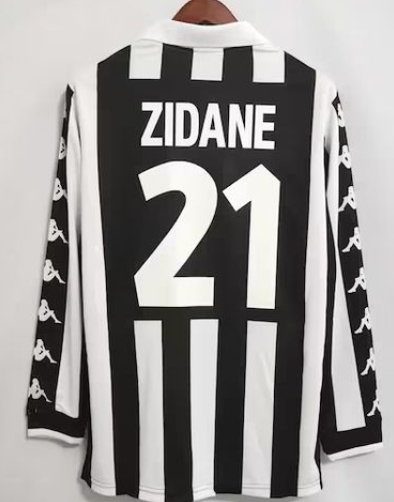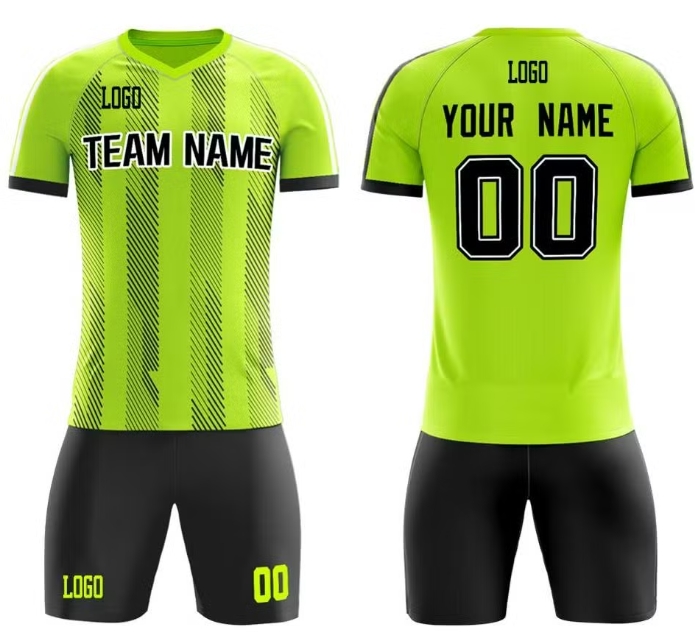

Soccer jerseys are more than just sportswear; they are symbols of identity, pride, and tradition for fans and players alike. Whether representing a national team or a club, jerseys carry historical, cultural, and emotional significance. Below, we explore the distinct characteristics, designs, and cultural roles of soccer jerseys
YUPOO china B2B2C Wholesale Supplier Branded soccer jerseys, join us on whatsapp | Yupoo fashion clubs national teams players jerseys football retro jerseys reseller online store , Yupoo jerseys Replica top version for yupoo wholsale drop shipping soccer jerseys to worldwide.
National team soccer jerseys represent a country’s identity on the global stage, worn during international competitions like the FIFA World Cup, UEFA European Championship, Copa América, and Olympic tournaments. These jerseys unite players and fans under a shared flag, embodying national pride and collective aspirations. Unlike club jerseys, which are tied to local or regional identities, national team jerseys are designed to reflect a country’s heritage, culture, and values, often incorporating symbols like flags, crests, or historical motifs.
The design of national team jerseys is a careful balance between tradition and innovation. Most jerseys prominently feature the national flag’s colors, which serve as a visual anchor. For example:
Brazil: The iconic yellow jersey with green trim, known as the "Canarinho," reflects the vibrant colors of the Brazilian flag and symbolizes the country’s flair and samba-style football.
Germany: The white base with black and red accents mirrors the national flag, with clean, minimalist designs emphasizing precision and discipline.
Argentina: Light blue and white vertical stripes are inspired by the flag and evoke the passion of Argentine football, famously worn by legends like Diego Maradona and Lionel Messi.
National crests or emblems are central to the jersey’s design, often placed over the heart. These crests may include symbols like coats of arms, stars (representing major tournament wins), or cultural icons. For instance, England’s Three Lions crest is a nod to the country’s royal heritage, while Japan’s jersey often incorporates the Yatagarasu, a mythical three-legged crow symbolizing guidance and ambition.
Modern national jerseys also embrace technological advancements. Brands like Nike, Adidas, and Puma use lightweight, breathable fabrics with moisture-wicking properties to enhance player performance. Designs may include subtle patterns or textures inspired by cultural elements, such as Mexico’s jerseys featuring Aztec-inspired graphics or Nigeria’s bold, geometric patterns that celebrate African artistry.
National team jerseys carry immense cultural weight, serving as a unifying force in countries with diverse populations. During international tournaments, fans don these jerseys to express solidarity, whether watching matches in stadiums, bars, or living rooms. The jerseys transcend social, economic, and political divides, fostering a sense of belonging. For example, when France won the 1998 World Cup, the multicultural squad wearing the blue jersey with the Gallic rooster symbolized unity in a nation grappling with issues of immigration and identity.
Jerseys also reflect historical narratives. Italy’s azure blue kit, known as "Azzurri," originates from the House of Savoy’s royal colors, tying the team to the country’s pre-republican past. Similarly, Uruguay’s light blue jersey with black accents recalls the nation’s early football dominance, with stars commemorating their 1930 and 1950 World Cup victories.
The evolution of national team jerseys mirrors broader trends in fashion and technology. In the early 20th century, jerseys were simple, made of heavy cotton with minimal branding. By the 1980s, synthetic fabrics and bold designs emerged, reflecting the commercialization of football. Today, national jerseys are fashion statements, with brands releasing home, away, and sometimes third kits to appeal to global markets.
Recent trends include eco-friendly materials, with brands like Adidas using recycled polyester for sustainability. Retro-inspired designs are also popular, such as England’s 1990-inspired away kit or Brazil’s nod to the 1970 World Cup jersey. Limited-edition jerseys, like those for special tournaments or anniversaries, attract collectors and fans alike.
Unlike club jerseys, national team jerseys typically do not feature sponsor logos prominently, preserving a cleaner, more traditional look. However, some nations, particularly smaller ones, may include sponsors to fund their programs. For example, Costa Rica’s jerseys occasionally display local sponsors, but the focus remains on the national crest. Major sportswear brands compete fiercely to outfit top teams, with Nike sponsoring Brazil and France, Adidas equipping Germany and Argentina, and Puma partnering with Senegal and Uruguay.
For fans, national team jerseys are a way to connect with their country’s footballing legacy. During tournaments, streets are awash with fans wearing their team’s colors, creating a festive atmosphere. Special-edition jerseys, like Nigeria’s 2018 World Cup kit, which sold out rapidly due to its vibrant design, show how jerseys can become cultural phenomena. Fans also personalize jerseys with the names of star players, such as Kylian Mbappé for France or Cristiano Ronaldo for Portugal, further deepening their emotional connection.
Designing national team jerseys can spark debate. Fans often resist drastic changes to traditional designs, as seen when Spain’s 2010 away kit, with its bold red and yellow fusion, divided opinions. Cost is another issue; high-quality replica jerseys can be expensive, limiting accessibility for some fans. Additionally, ethical concerns about manufacturing practices in countries with lax labor laws have prompted calls for greater transparency from brands.
National team soccer jerseys are powerful symbols of unity, heritage, and aspiration. Their designs blend tradition with modernity, reflecting a country’s identity while embracing global trends. For players, wearing the national jersey is the ultimate honor, representing their nation on the world stage. For fans, it’s a badge of pride, worn to celebrate victories and endure defeats together. As football continues to evolve, national jerseys will remain timeless emblems of the beautiful game.
Club team soccer jerseys represent the heart of domestic and continental football, worn by teams in leagues like the Premier League, La Liga, Serie A, and the UEFA Champions League. Unlike national jerseys, which unify a country, club jerseys are tied to local communities, histories, and rivalries. They embody the spirit of cities, regions, or neighborhoods, fostering fierce loyalty among fans. Clubs like Manchester United, Real Madrid, and Bayern Munich have global followings, making their jerseys iconic fashion items.
Club jerseys are defined by their unique color schemes and crests, which often have deep historical roots. For example:
Manchester United: The red "Red Devils" jersey with the trident-wielding devil crest reflects the club’s bold identity and storied history in English football.
FC Barcelona: The blue and red stripes, known as "Blaugrana," symbolize Catalan pride, with the crest featuring the St. George cross and the Catalan flag.
Juventus: The black and white vertical stripes, inspired by English club Notts County, are synonymous with Italian football dominance.
Crests are a focal point, often incorporating symbols of the club’s origins or city. Liverpool’s crest includes the Liver Bird, a mythical creature tied to the city’s maritime heritage, while AC Milan’s features the red cross of St. Ambrose, Milan’s patron saint. Many clubs add stars to their crests to signify league titles or Champions League wins, such as Juventus’ three stars for over 30 Serie A titles.
Modern club jerseys prioritize performance, using advanced materials like Nike’s Dri-FIT or Adidas’ Climacool for breathability and comfort. Designs often include subtle nods to the club’s history, such as Arsenal’s 2023-24 kit, which celebrated the Invincibles’ unbeaten 2003-04 season with gold accents.
Club jerseys are deeply tied to local identity and rivalry. In cities like Manchester, the divide between United’s red and City’s sky blue is a way of life, with jerseys signaling allegiance. Similarly, in Buenos Aires, Boca Juniors’ blue and yellow contrasts with River Plate’s white and red, fueling one of the fiercest derbies in football. Wearing a club jersey is a declaration of loyalty, often passed down through generations.
Jerseys also reflect a club’s values. Ajax’s red and white kit embodies the Dutch philosophy of Total Football, while Borussia Dortmund’s yellow and black represents the industrial grit of the Ruhr region. For fans, jerseys are worn not just at matches but in everyday life, from schoolyards to workplaces, symbolizing a lifelong bond with the club.
Club jerseys have evolved from basic woolen shirts in the 19th century to high-tech garments today. The 1980s and 1990s saw bold, colorful designs, like Arsenal’s "bruised banana" away kit, which remains a fan favorite. Today, clubs release multiple kits each season—home, away, and third—to maximize revenue and appeal to global audiences. Third kits often experiment with daring colors or patterns, such as Manchester City’s 2022-23 neon pink kit inspired by the city’s nightlife.
Sustainability is a growing focus, with clubs like Tottenham using recycled materials in their kits. Retro jerseys, like Liverpool’s 1984-inspired kit, tap into nostalgia, while collaborations with fashion brands, such as PSG’s Jordan-branded jerseys, blur the line between sportswear and streetwear.
Club jerseys are heavily commercialized, featuring prominent sponsor logos on the front. For example, Real Madrid’s jerseys display Emirates, while Chelsea’s feature Nike and a rotating cast of sponsors. These partnerships generate significant revenue, with top clubs earning millions annually from kit deals. Sportswear brands compete to sign elite clubs, with Adidas sponsoring Real Madrid, Nike outfitting Barcelona, and Puma partnering with Manchester City.
Club jerseys are a cornerstone of fan culture. Supporters wear them to matches, creating a sea of color in stadiums, and personalize them with the names of heroes like Erling Haaland or Vinícius Jr. Limited-edition kits, like Bayern Munich’s Oktoberfest-inspired designs, are collector’s items. Social media has amplified jersey culture, with fans showcasing custom designs or debating new releases on platforms like X.
New kit designs often spark controversy. Manchester United’s 2019-20 camouflage-inspired away kit was widely criticized, while Barcelona’s 2021-22 checkerboard design divided fans. High prices—often over $100 for authentic jerseys—exclude some supporters, leading to debates about affordability. Ethical concerns about sweatshop labor in jersey production have also prompted calls for reform, with brands like Puma committing to fairer practices.
Club team soccer jerseys are vibrant expressions of local pride, history, and fandom. Their designs capture the essence of a club’s identity, from colors to crests, while adapting to modern trends and technologies. For players, wearing the jersey is a privilege earned through talent and dedication. For fans, it’s a lifelong commitment, worn to celebrate triumphs and endure heartbreak. As clubs continue to globalize, their jerseys will remain enduring symbols of community and passion in the world’s most popular sport.